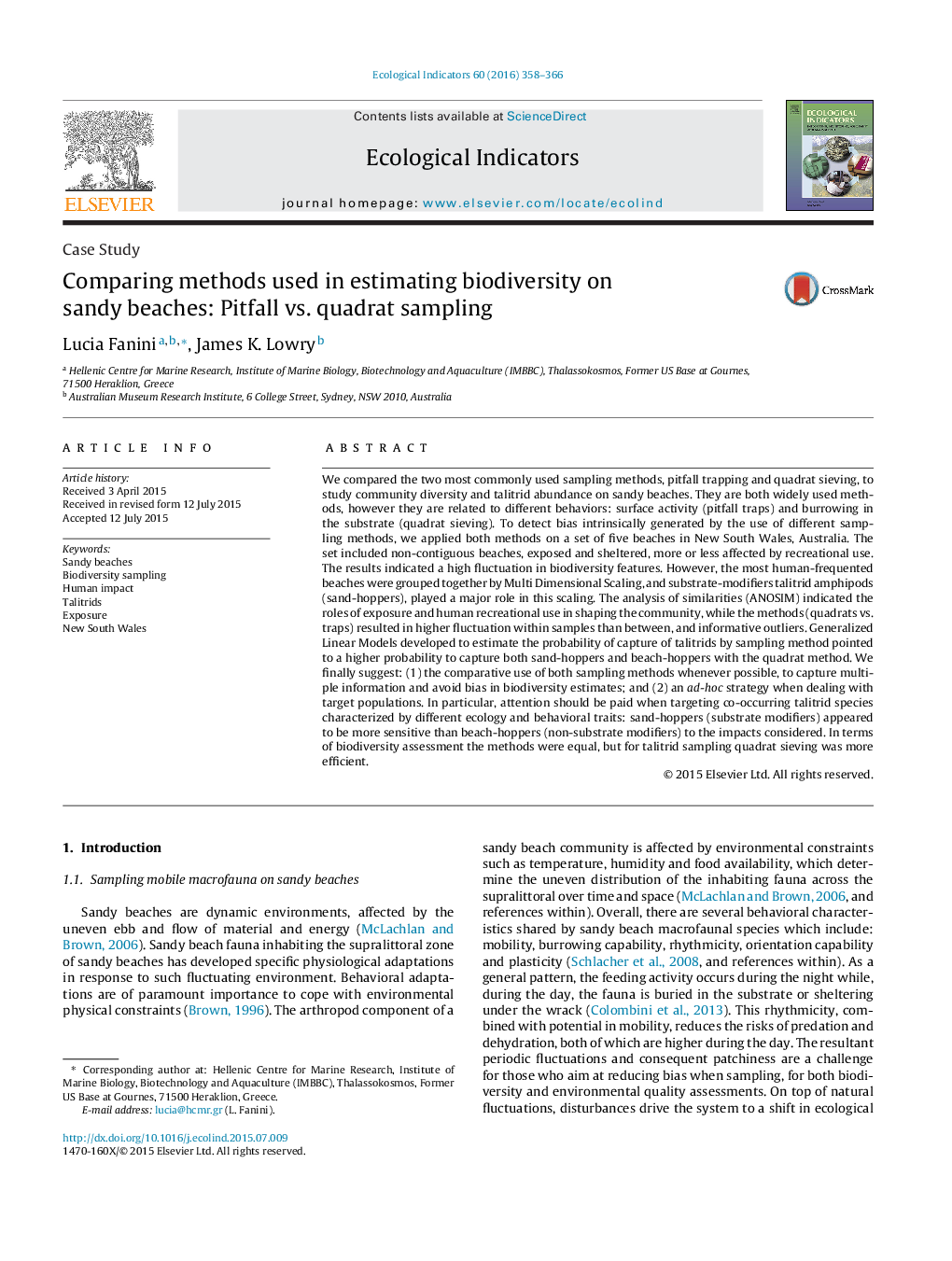| کد مقاله | کد نشریه | سال انتشار | مقاله انگلیسی | نسخه تمام متن |
|---|---|---|---|---|
| 6294053 | 1617141 | 2016 | 9 صفحه PDF | دانلود رایگان |
عنوان انگلیسی مقاله ISI
Comparing methods used in estimating biodiversity on sandy beaches: Pitfall vs. quadrat sampling
ترجمه فارسی عنوان
مقایسه روش های مورد استفاده در تخمین تنوع زیستی در سواحل شیلی: نمونه برداری در مقابل کوادرات
دانلود مقاله + سفارش ترجمه
دانلود مقاله ISI انگلیسی
رایگان برای ایرانیان
کلمات کلیدی
ساحل های شنی، نمونه برداری از تنوع زیستی، تاثیر انسانی، تالیتید، گرفتن در معرض، نیو ساوت ولز،
موضوعات مرتبط
علوم زیستی و بیوفناوری
علوم کشاورزی و بیولوژیک
بوم شناسی، تکامل، رفتار و سامانه شناسی
چکیده انگلیسی
We compared the two most commonly used sampling methods, pitfall trapping and quadrat sieving, to study community diversity and talitrid abundance on sandy beaches. They are both widely used methods, however they are related to different behaviors: surface activity (pitfall traps) and burrowing in the substrate (quadrat sieving). To detect bias intrinsically generated by the use of different sampling methods, we applied both methods on a set of five beaches in New South Wales, Australia. The set included non-contiguous beaches, exposed and sheltered, more or less affected by recreational use. The results indicated a high fluctuation in biodiversity features. However, the most human-frequented beaches were grouped together by Multi Dimensional Scaling, and substrate-modifiers talitrid amphipods (sand-hoppers), played a major role in this scaling. The analysis of similarities (ANOSIM) indicated the roles of exposure and human recreational use in shaping the community, while the methods (quadrats vs. traps) resulted in higher fluctuation within samples than between, and informative outliers. Generalized Linear Models developed to estimate the probability of capture of talitrids by sampling method pointed to a higher probability to capture both sand-hoppers and beach-hoppers with the quadrat method. We finally suggest: (1) the comparative use of both sampling methods whenever possible, to capture multiple information and avoid bias in biodiversity estimates; and (2) an ad-hoc strategy when dealing with target populations. In particular, attention should be paid when targeting co-occurring talitrid species characterized by different ecology and behavioral traits: sand-hoppers (substrate modifiers) appeared to be more sensitive than beach-hoppers (non-substrate modifiers) to the impacts considered. In terms of biodiversity assessment the methods were equal, but for talitrid sampling quadrat sieving was more efficient.
ناشر
Database: Elsevier - ScienceDirect (ساینس دایرکت)
Journal: Ecological Indicators - Volume 60, January 2016, Pages 358-366
Journal: Ecological Indicators - Volume 60, January 2016, Pages 358-366
نویسندگان
Lucia Fanini, James K. Lowry,
